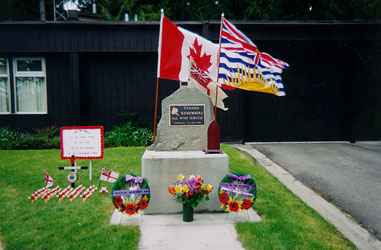Joseph Lewis, the truly first Portuguese Joe No. 1
(Do Not) “Hang and draw,
And set in judgement after. "
(Henry Crease*, Lewis' lawyer)
The British Colonist, June 3, 1859, p.2
BARBAROUS MURDER-On or about Wednesday night, Johnston Cochrane, one of
the police was barbarously murdered on the road to Craig Flower, where the body
was discovered lying, having received two shots, one through the head and another,
in the mouth. A colored man is suspected, whom the deceased was in search of, for
having stolen some pigs. Yesterday he was arrested some seven miles from this
town, towards Saanitch. His name is Joseph Lewis, alias Portuguese Joe, a native
of the Cape de Verde Islands. He will be examined this morning.
On application of Sheriff Heaton, His Excellency, Gov. Douglas, has offered 100 (pounds)
for the arrest and conviction of the murderer. We sincerely hope, that no effort or
expense will be spared in bringing the perpetrator of this awful crime to speedy justice.
During the past year several murders have been committed, supposed to have been done by whitemen, but no conviction has resulted.
June 6, 1859, p. 2
THE MURDER OF JOHNSON COCHRANE--
The officers of justice have not yet succeeded
in obtaining necessary evidence of the complicity of
the colored man, “ Portuguese Joe”
in this crime . He is still in prison and
we hear that every effort is being made to
arrest the perpetrator of the foul deed.
June 13, 1859, p. 3
VICTORIA POLICE COURT
-----
BEFORE JUSTICE PEMBERTON
SATURDAY, June 11th
The Murdered Policeman, Cochrane--
A half-breed, Jollibeau, who resides
with his father on the farm of the late Dr. Kenedy,
was very closely interrogated by justice
Pemberton, to learn if he had any connection
with Joe Lewis, the party in prison.
It appeared that he had been engaged in
the early part of the year, with two colored
men, in shooting game for the market. A double barreled
gun with one rifle, and one smooth bore, together with a revolver and,
fowling-piece were produced in court ;
he swore that they had not been out of his possession on
the supposed day of the murder, and also that he had very little knowledge of the accused. His sister, who seemed to know very little of the rules of court, and gave the Judge considerable trouble, failed to connect, in any way, the parties, but distinctly swore that she had never seen Lewis. Jollibeau was set at liberty. As yet there is no evidence to implicate any party. The officers are still in pursuit of the murderers. Lewis will be brought up again on Thursday.
June 17, 1859, p.3
VICTORIA POLICE COURT
-----
BEFORE JUSTICE PEMBERTON
WEDNESDAY, 15th June.
ACQUITTAL: Joseph Lewis, charged with
being concerned in the murder of Policeman
Cochrane, was called up for final examination.
The Crown Solicitor asked to remand him; but the prisoner's
counsel, Mr. Crease, objected. Officer Smith, being
sworn, testified that there was no prospect
of further evidence to show that the prisoner was
concerned in the murder. The court suggested
that the prisoner make a voluntary statement,
warning him not to confess anything to convict himself.
Lewis then stated that he had slept at Victoria
Brewery, the night previous to the murder;
that he started early to go to Porter's farm;
Porter considered it too late to hunt up
cattle, so he returned to the Brewery; slept
there that night with a man named Wallace.
He had no firearms; was by trade
a butcher; did not know the deceased; had
no idea of a warrant being out for his arrest
on a charge of stealing pigs; lived on
Johnson street .
Two witnesses were called, Mr. Wallace
and Mr. Steinberg; who corroborated his
statement.
Mr. Crease asked for his immediate
acquital.
The Court questioned Lewis very closely
as to his mode of life; stated that he was
suspected of killing cattle and pigs,--and
warned him if he came before him, bonds
would be required for his good behavior.
Mr. Crease hoped his Worship would not
“Hang and draw,
And set in judgement after. "
Lewis was then discharged.
ON SUSPICION--Francoise Presse
was arraigned on the charge of being concerned
in the murder of Johnson Cochrane; but
after a short examination, was remanded
till tomorrow.
In 1858 Henry Crease was the first barrister qualified to practice as a Barrister of Her Majesty's Court of Civil Justice for Vancouver Island. He was later appointed Attorney General.



